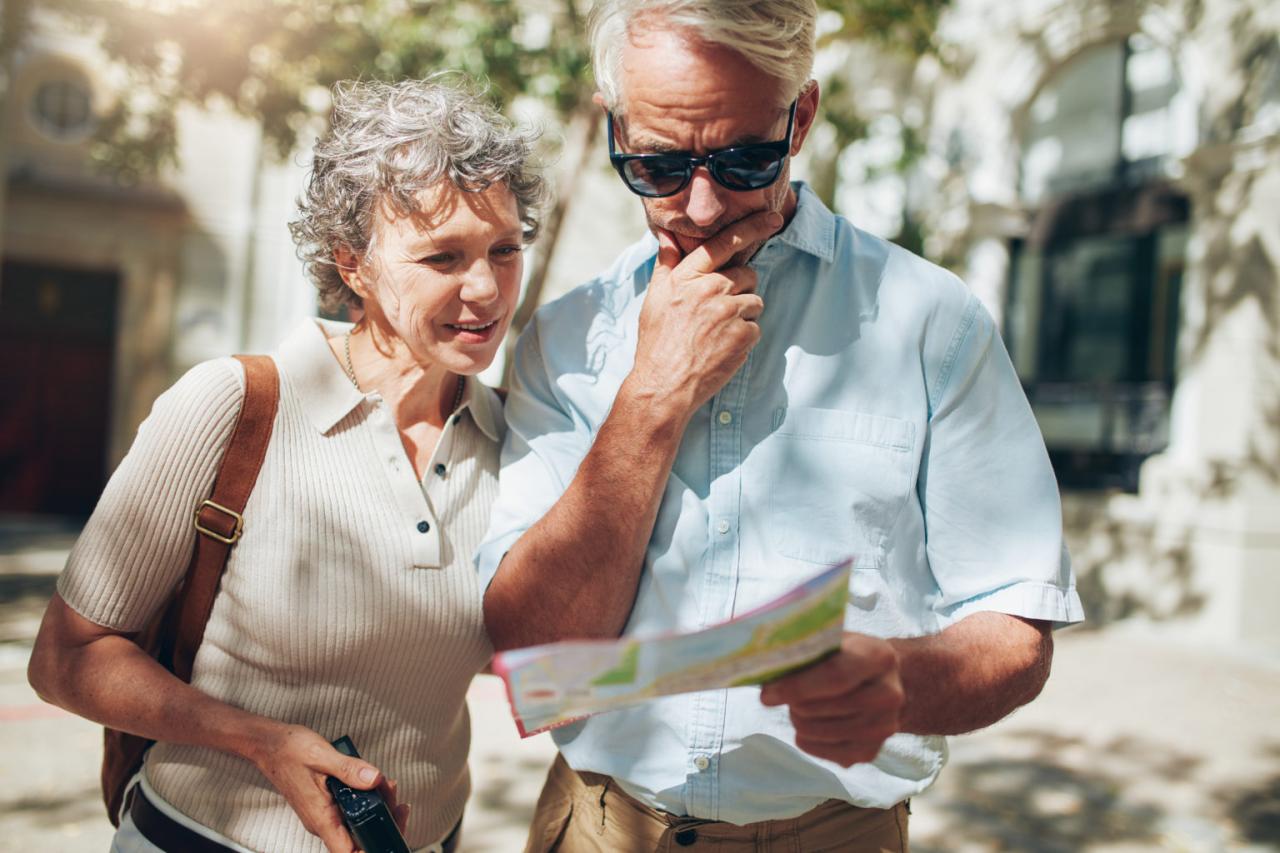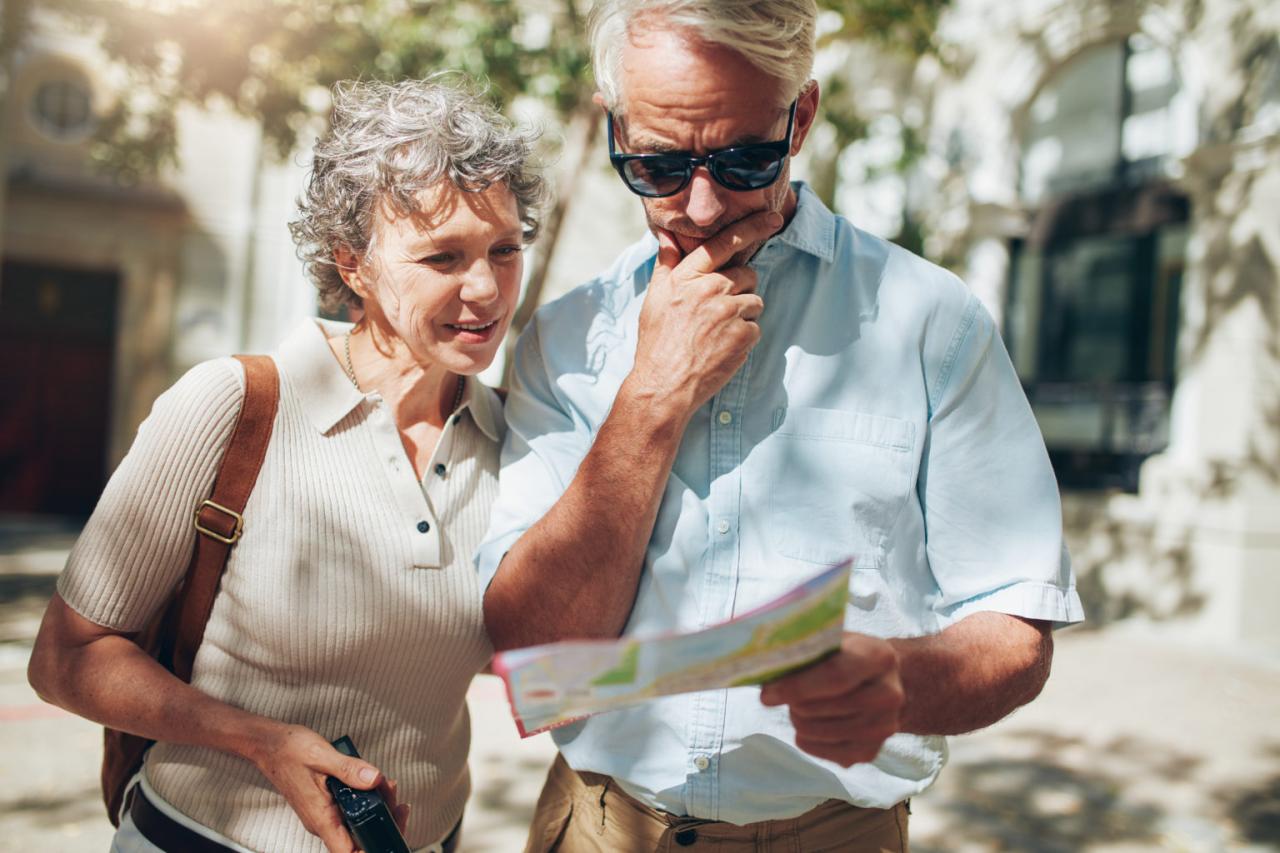Planning a multi-country European tour for senior citizens requires meticulous preparation and consideration. This journey, while potentially demanding, promises an enriching experience filled with cultural immersion, historical exploration, and unforgettable memories. Successfully navigating the complexities of such a trip hinges on careful planning, encompassing health considerations, accessible travel arrangements, and a well-paced itinerary that prioritizes comfort and enjoyment.
From selecting accessible destinations and securing appropriate travel insurance to crafting a realistic itinerary and packing essential items, each stage plays a crucial role in ensuring a smooth and rewarding adventure. This guide will explore the key aspects of planning this type of tour, providing valuable insights and practical advice to help senior citizens embark on a fulfilling European exploration.
Planning a trip requires careful consideration, especially for senior travelers. Prioritizing comfort, safety, and accessibility is key to a successful and enjoyable experience. Let’s break down the essential steps:
Choosing Destinations
Select destinations that are easily accessible, considering factors like climate, personal interests (history, art, nature, etc.), and travel time between locations. To avoid feeling rushed, it’s advisable to prioritize fewer destinations. Research accessibility features of potential destinations beforehand, ensuring airports, train stations, and attractions are suitable for your needs.
Health & Medical Considerations: Planning A Multi-country European Tour For Senior Citizens
A consultation with your doctor is crucial. Discuss necessary vaccinations, any required medications, and potential health risks specific to your chosen destinations. Securing comprehensive travel insurance, including medical evacuation coverage, is paramount. Prepare a well-stocked first-aid kit. If needed, consider traveling with a companion or hiring a caregiver for assistance.
Travel Documents
Gather all essential documents well in advance: passports (verify expiry dates!), visas (if required), travel insurance documents, and copies of important documents (stored separately from the originals). Keep a readily accessible list of any necessary medical information, including allergies and medications.
Flights & Transportation
Book flights and internal transportation (trains, buses) in advance. Opt for direct flights whenever possible to minimize stress and potential delays. Choose comfortable travel options, considering your physical limitations. Research accessibility options for airports and train stations to ensure a smooth journey.
Accommodation
Select accessible and comfortable hotels or accommodations. Prioritize proximity to attractions and transportation. Pre-booking is strongly recommended to secure your preferred options and ensure accessibility features are available.
Budgeting
Create a detailed budget encompassing flights, accommodation, transportation, activities, food, souvenirs, and potential unforeseen expenses. Utilizing a travel budget app can assist in tracking spending and staying within your allocated funds.

Itinerary & Activities
A well-planned itinerary is essential for a relaxed and enjoyable trip.
Pace Yourself
Create a realistic itinerary with ample time for rest and relaxation. Avoid over-scheduling. Build in flexibility to accommodate unexpected delays or changes in plans. Remember, the goal is to enjoy the experience, not to rush through it.
Accessible Activities
Choose activities that are suitable for your physical abilities. Research accessibility features of attractions and museums beforehand. Guided tours can be beneficial, offering convenience and providing valuable information.
Cultural Considerations
Research local customs and etiquette to ensure a respectful and enjoyable experience. Understanding cultural norms will enhance your interactions and contribute to a more positive trip.
Daily Structure
Plan for a manageable number of activities each day, allowing for breaks and downtime. Avoid overwhelming yourself with too much activity, prioritizing rest and relaxation.
Emergency Contacts
Establish a system for contacting family or emergency services. Share your itinerary with a trusted contact who can be reached in case of an emergency.
Packing Essentials
Packing efficiently and thoughtfully is crucial for a comfortable journey.
Comfortable Clothing
Pack lightweight, breathable, and comfortable clothing suitable for various weather conditions. Prioritize comfort and ease of movement.
Appropriate Footwear
Comfortable, supportive shoes are essential for walking and exploring. Consider shoes specifically designed for comfort and support.
Medications & Toiletries
Pack all necessary medications in their original containers, along with a list of medications and dosages. Include essential toiletries and any personal care items you require.
Adapters & Converters
Check voltage requirements and bring necessary adapters and converters for electronic devices to avoid any compatibility issues.
First-Aid Kit
A comprehensive first-aid kit is a must-have, including bandages, antiseptic wipes, pain relievers, motion sickness medication, and any personal medications.
Other Essentials
Don’t forget sunglasses, a hat, sunscreen, insect repellent, a reusable water bottle, and a small backpack for day trips.
On-Tour Considerations
Maintaining your well-being and safety during your trip is of utmost importance.
Staying Hydrated & Healthy
Drink plenty of water, eat nutritious meals, and get enough rest. Be mindful of food safety and hygiene practices to avoid any health issues.
Communication
Have a plan for communication with family and friends, including international roaming or purchasing a local SIM card.
Safety & Security
Be aware of your surroundings, avoid walking alone at night, and keep valuables secure. Take necessary precautions to ensure your safety and security.
Handling Emergencies
Know what to do in case of medical emergencies, lost luggage, or other unforeseen circumstances. Have a plan in place for various scenarios.
Enjoy the Journey
Relax, embrace the experience, and create lasting memories!
Post-Trip Follow-Up
After your trip, take some time to reflect and plan for future adventures.
Review & Reflection
Reflect on your trip, noting what went well and what could be improved for future travels. This will help refine your planning process for future trips.
Sharing Memories
Share photos and stories with family and friends. Sharing your experiences enhances the enjoyment and creates lasting memories for everyone.
Travel Journal
Consider keeping a travel journal to record your memories and experiences. This can be a wonderful way to preserve your journey for years to come.
Embarking on a multi-country European tour as a senior citizen can be an incredibly rewarding experience, a testament to the spirit of adventure and a desire to explore the world. By carefully considering the factors Artikeld in this guide—from pre-trip planning and health considerations to on-tour safety and post-trip reflection—seniors can confidently plan and execute a trip filled with unforgettable moments and lasting memories.
Remember, thorough preparation is key to ensuring a comfortable, enjoyable, and safe journey through the diverse landscapes and rich cultures of Europe.


